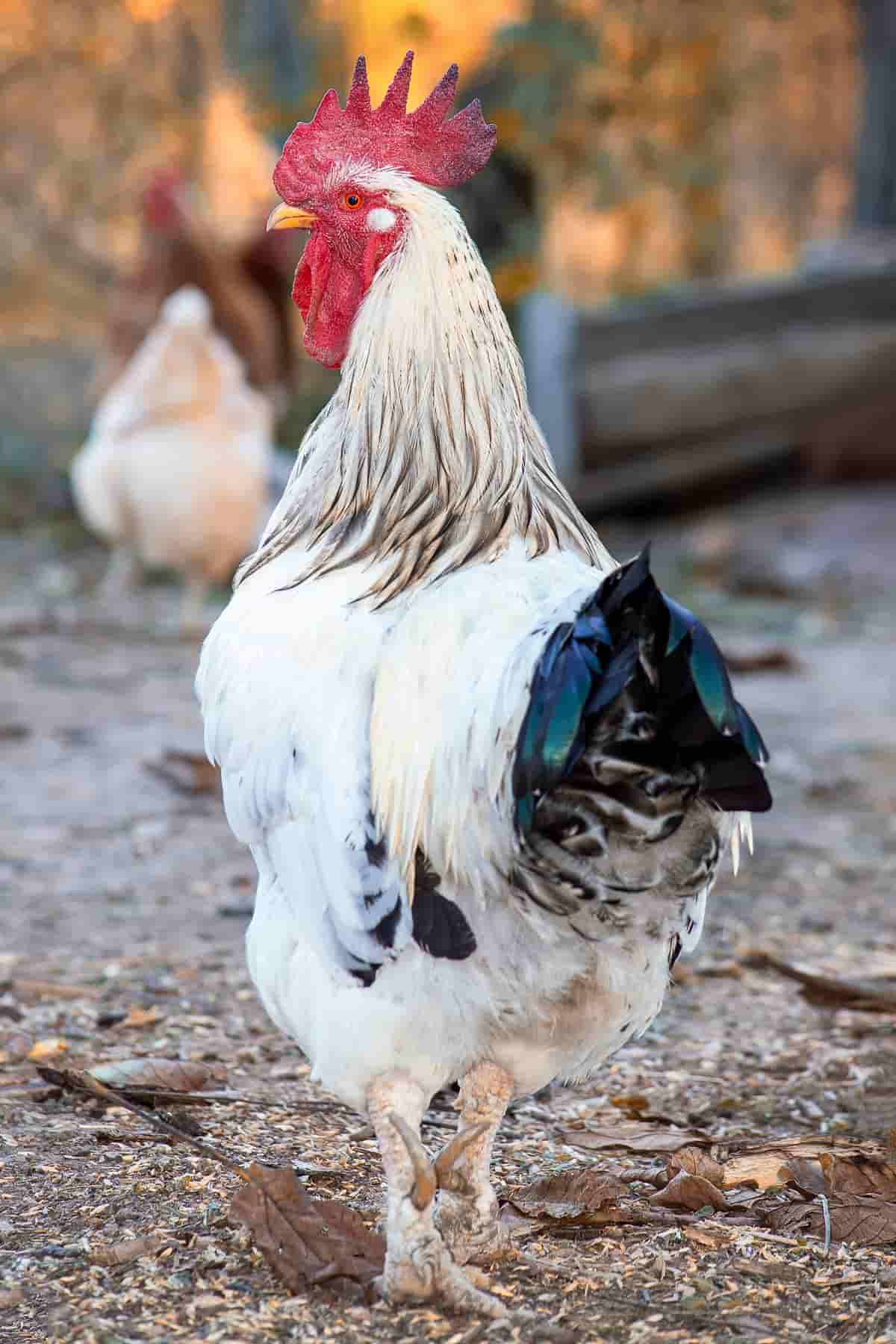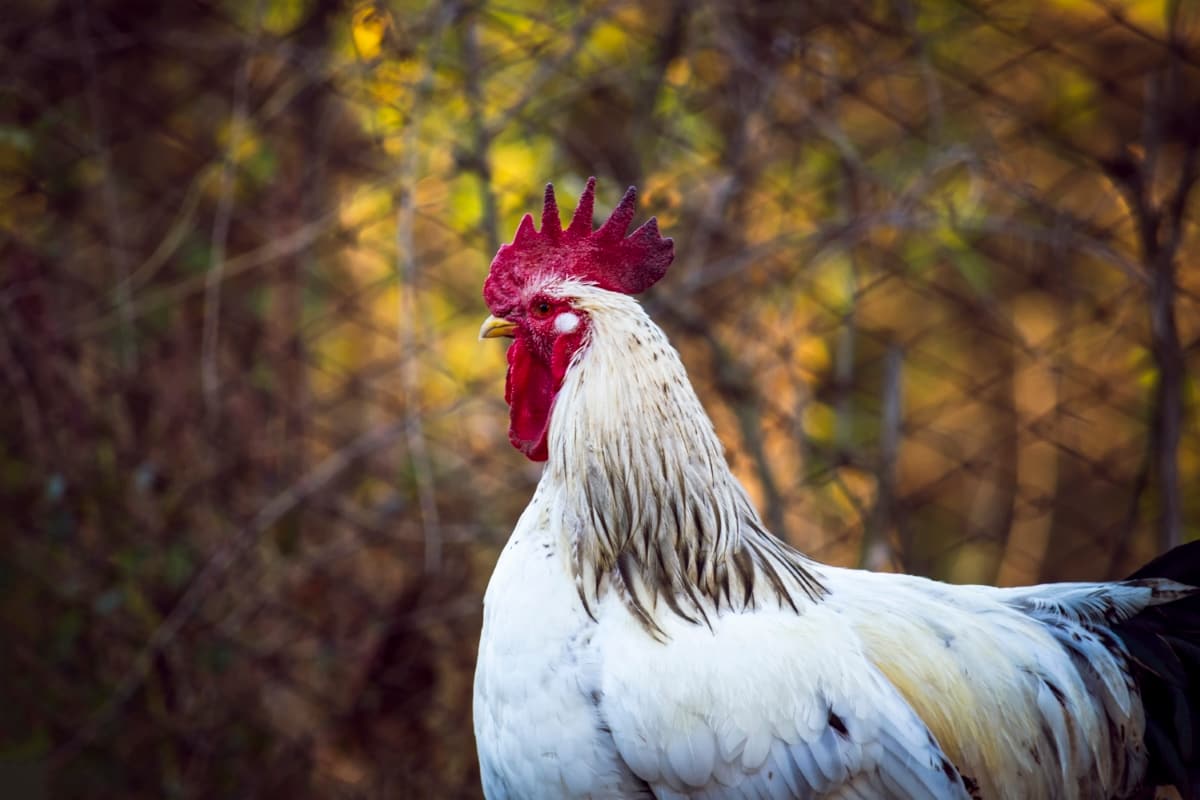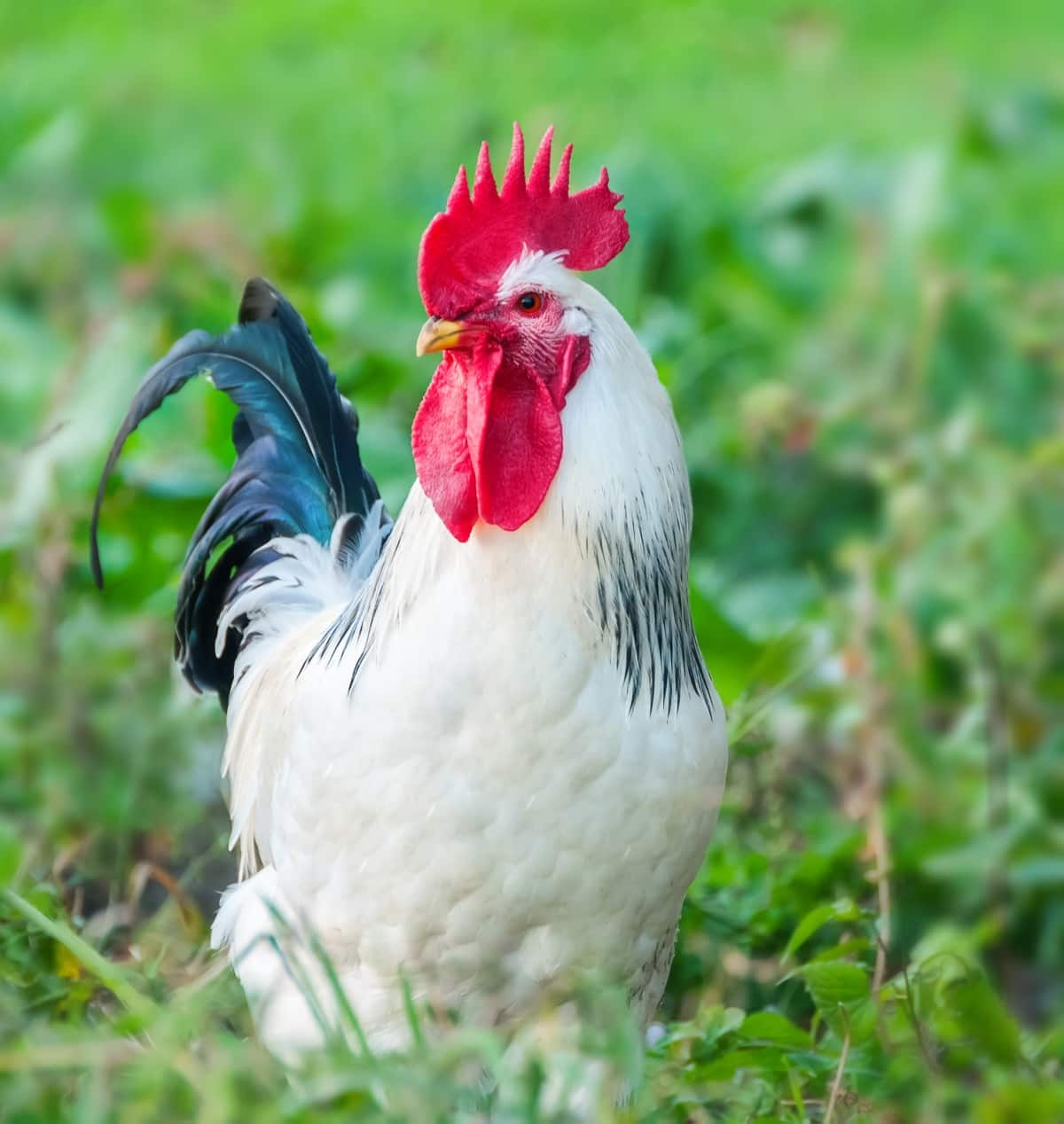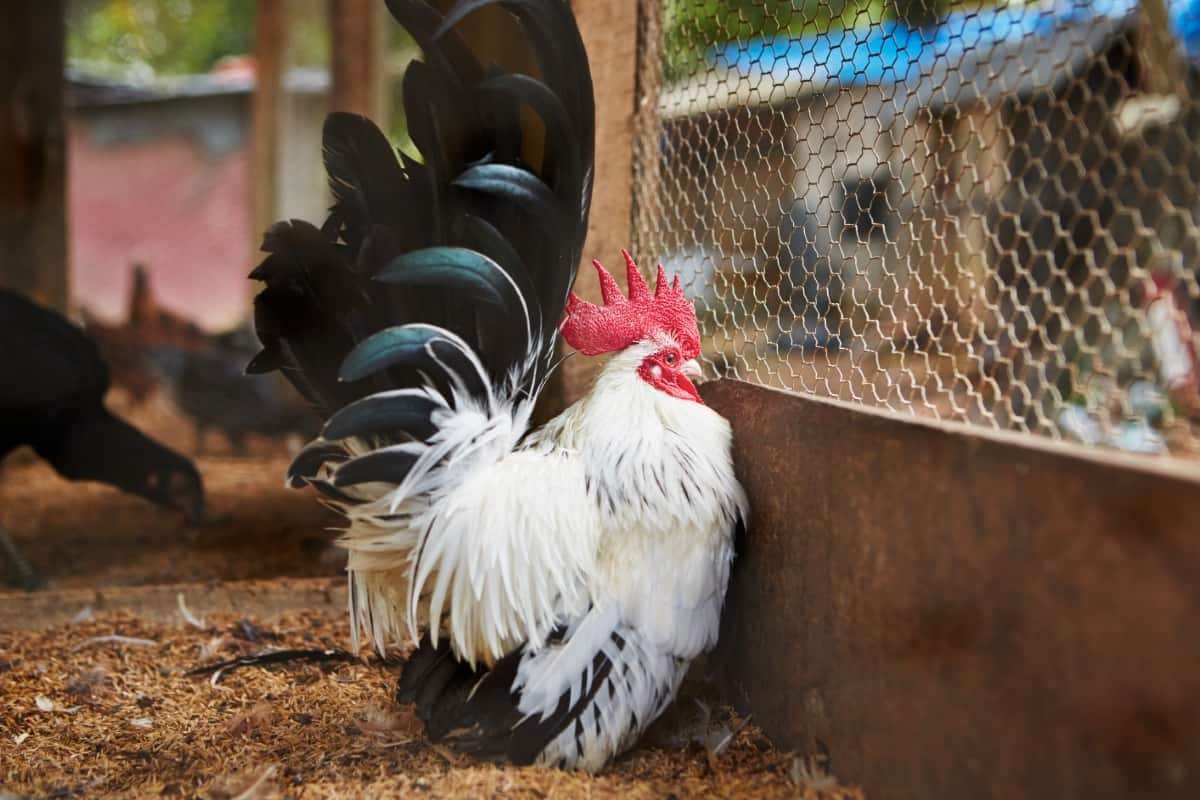The Ermellinata di Rovigo stands as a contemporary Italian dual-purpose chicken breed, tracing its roots to the urban landscape of Rovigo in northeastern Italy within the Veneto region. This breed’s inception occurred during the years spanning from 1959 to 1965, primarily through the selective breeding of Sussex and Rhode Island Red chickens.
Introduction to Ermellinata di Rovigo Chicken
Ermellinata di Rovigo Chicken Characteristics and Significance
The Ermellinata di Rovigo chicken is known for its distinctive color pattern of dark brown feathers speckled with light beige spots, resembling the markings of an ermine. Known for its docile temperament and adaptability to various climates, poultry enthusiasts and small-scale farmers favor it.
Ermellinata di Rovigo Lifespan
Typically, Ermellinata di Rovigo chickens have a lifespan of around 5-7 years, based on their care and environment. With regular access to suitable living conditions, balanced nutrition, and appropriate healthcare, raising Ermellinata di Rovigo contributes to a sustainable backyard flock or small-scale farming operation.
Ermellinata di Rovigo Price
Though relatively rare outside its native region, its unique qualities justify its moderate price, typically ranging from $20 to $40 per baby chicken, reflecting its heritage and utility in sustainable poultry farming.

Physical Description of Ermellinata di Rovigo
Size and Weight
Typically, it is a medium-sized bird, with hens weighing around 2.5 to 3 kilograms (5.5 to 6.6 pounds) and roosters slightly heavier at 3 to 3.5 kilograms (6.6 to 7.7 pounds). They have a compact build with a broad chest, sturdy legs, and a relatively small comb and wattles.
Feathering and Color Patterns
Known for its distinctive appearance, the Ermellinata di Rovigo features a striking black and white feather pattern. The plumage is characterized by a harmonious blend of contrasting colors, with black and white stripes creating an eye-catching and appealing design. This breed’s feathers are smooth and lustrous, accentuating its aesthetic appeal and making it a visually captivating addition to any flock.
Ermellinata di Rovigo Temperament and Behavior
Social Dynamics in the Flock
Ermellinata di Rovigo chickens are known for their docile behavior, making them easy to manage. They exhibit calm behavior within the flock, showing minimal aggression towards other birds.
Interaction with Humans
These chickens tend to be friendly and responsive to human interaction, often showing curiosity and approachability. They can form strong bonds with their caregivers, making them suitable for backyard flocks or small farms. Ermellinata di Rovigo chickens are generally cooperative during handling, making them a pleasure to work with for both novice and experienced poultry keepers.
Ermellinata di Rovigo’s Egg Production
Egg Size and Color
The Ermellinata di Rovigo chicken breed typically produces medium-sized eggs ranging from small to medium-large, with an average weight of around 55-60 grams per egg. These eggs exhibit a light brown coloration, often with speckles or slight variations in hue.
Laying Frequency and Age of First Lay
On average, they lay approximately 200 to 250 eggs annually, depending on factors such as diet, housing conditions, and individual health. Ermellinata di Rovigo hens reach maturity relatively early, typically beginning to lay eggs at around 5 to 6 months of age, showcasing their precocious nature.
In case you missed it: Ultimate Guide to Buckeye Chicken: Discover from Raising Facts to Breed Profile

Housing and Shelter Needs
Coop Design and Space Requirements
The Ermellinata di Rovigo chicken coop design should prioritize sufficient space for the chickens to move around comfortably. Each chicken requires at least 3-4 square feet of space coop space and 8-10 square feet of outdoor space. Additionally, nesting boxes should be provided for egg-laying, with one box for every 3-4 hens.
Protection from Predators and Elements
The coop should be constructed with sturdy materials and secure locks. Dig-proof fencing and wire mesh can prevent entry from Ermellinata di Rovigo chicken predators and airborne threats. Adding perches and hiding spots within the coop can offer additional security and comfort for the Ermellinata di Rovigo chickens.
Feeding and Nutrition
Diet Requirements Throughout Life Stages
For feeding Ermellinata di Rovigo chickens, from baby chickens to adults, prioritize high-quality poultry feed rich in protein, essential vitamins, and minerals. Provide baby chicken starter feed (20-24% protein) for the first 6-8 weeks, transitioning to grower feed (16-18% protein) until 18 weeks, then layer feed (16-18% protein) for laying hens. Adjust feed quantity based on activity level and environmental conditions.
Supplements and Treats
Along with the Ermellinata di Rovigo chicken diet, incorporate calcium supplements for laying hens to support eggshell formation. Offer occasional treats like mealworms, fruits, and vegetables in moderation, ensuring they don’t exceed 10% of the total diet. Ensure free access to clean water at all times.
Health care for Ermellinata di Rovigo and Care
Common Health Issues and Prevention
They are susceptible to common health issues such as respiratory infections, parasites, and nutritional deficiencies. Preventive measures include maintaining a clean and well-ventilated coop, providing balanced nutrition with appropriate supplements, and regular health checks. Additionally, practicing good biosecurity by limiting exposure to outside pathogens and quarantining new birds can help prevent the spread of diseases.
Routine Care and Vaccinations
Ensure Ermellinata di Rovigo chickens have access to fresh water, balanced feed, and a suitable living environment. Vaccinations for diseases like Marek’s disease and Newcastle disease are essential. Regular grooming, monitoring for signs of illness, and prompt Ermellinata di Rovigo chicken care are crucial for their well-being.
Breeding Ermellinata di Rovigo Chickens
Selecting Breeding Stock
- Phenotypic Traits: For breeding Ermellinata di Rovigo chickens, choose birds with desired traits like coloration, comb type, and body conformation.
- Health and Vitality: Select individuals free from diseases and deformities, ensuring strong immune systems.
- Genetic Diversity: Maintain genetic diversity to prevent inbreeding depression and promote overall population health.
Managing Breeding and Hatchling Care
- Controlled Mating: Organize mating pairs carefully to control genetic outcomes and maintain breed standards.
- Optimal Nutrition: Provide balanced diets rich in proteins and vitamins to breeding birds to support egg production and hatchling health.
- Incubation: Utilize appropriate incubation techniques and equipment to ensure proper development and hatchability of eggs.
- Brooding: Maintain ideal temperature and humidity levels for hatchlings, offering adequate space and nutrition for healthy growth.
In case you missed it: Bionda Piemontese Chicken Facts: Ultimate Guide Breeding, Raising and Care

Raising Ermellinata di Rovigo Baby Chicken
Brooding Setup and Care
Ensure a warm, draft-free area with a heat source like a heat lamp, maintaining temperatures around 37°C initially. Provide clean bedding, fresh water, and starter baby chicken feed. Monitor baby chickens for signs of distress or illness, adjusting conditions as needed.
Growth Milestones and Development
Within a week, baby chickens should start feathering and become more active. By two weeks, they should regulate body temperature better, allowing for reduced heat. At four weeks, they’ll resemble miniature adults, feathered and capable of roosting. Introduce baby chicken grit and treats gradually. By eight weeks, they’ll be fully feathered, weaned off starter feed onto grower feed, and ready for the coop.
In case you missed it: Wyandotte Chicken Egg Production: A Comprehensive Guide

Conclusion
The Ermellinata di Rovigo chicken breed is a fascinating and unique poultry variety that holds a special place in the world of chicken farming. With its striking appearance, docile temperament, and excellent egg-laying capabilities, it has become a favorite among poultry enthusiasts and small-scale farmers alike.
Note: The images presented in this post are intended solely for representation purposes. The images are meant to serve as visual aids and should not be relied upon as accurate representations of their real-life counterparts.
- Feed Your Flock for Less: Top 10 Tips to Save on Chicken Feed
- Ultimate Guide to Ossabaw Island Hog: Breeding, Raising, Diet, and Care
- Hatching Answers: The Top 10 Reasons Your Chickens Aren’t Laying Eggs
- Eggs and Economics: Breaking Down the Cost of Raising Backyard Chickens
- Defend Your Greens: Proven Methods to Keep Iguanas Out of Your Garden
- Ultimate Guide to Cinnamon Queen Chicken: A Comprehensive Guide for Beginners
- Ultimate Guide to California Tan Chicken: Breeding, Raising, Diet, Egg-Production and Care
- Ultimate Guide to Marsh Daisy Chicken: Breeding, Raising, Diet, and Care
- 10 Types of Chicken Farming Businesses You Can Start for Profits